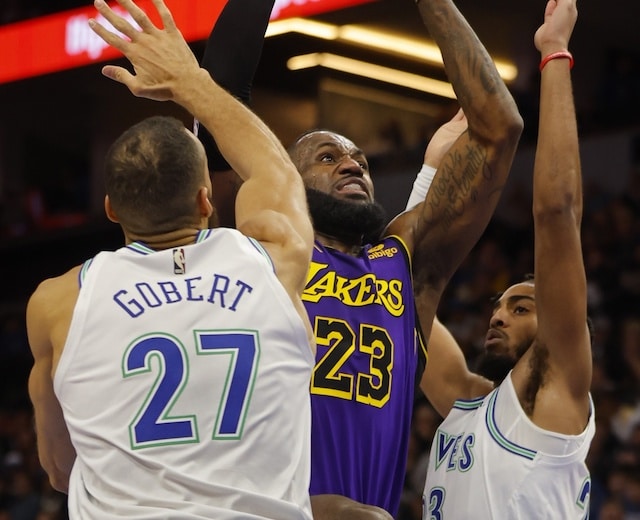As demonstrations over the Israel-Gaza war moved into a second week, some students struggled to weigh the once-in-a-lifetime pomp and circumstance against once-in-a-generation protests. Looking for idyllic pockets of campus, they put on cheery smiles for photo shoots in their caps and gowns, sometimes to the accompaniment of a variation on the slogan considered by some to call for the eradication of Israel: “From the sea to the river, Palestine will live forever.”
For many students, life hasn’t changed much, as the end of the school year takes precedence over the protests. Others spend their days and nights outdoors, eating donated food and rallying for university leaders to divest what they say are the college’s investments and sever financial ties with Israel.
At Columbia, the epicenter of pro-Palestinian college protests, there are two worlds: life inside the encampment and life outside it.
The encampment that has taken over a grassy lot near the center of Columbia’s main campus is quiet and orderly, encircled by a low fence and green shrubbery punctured with small Palestinian flags. Organizers estimate there are hundreds of students inside, and they operate like members of a tiny village.
Leaders of Columbia University Apartheid Divest, a collaboration of Palestinian and Jewish student groups, erected the encampment with dozens of blue, orange, green and gray tents on April 17. The next day, university President Minouche Shafik called in New York police officers who wore riot gear as they made the mass arrests — a move that only served to make Columbia’s encampment grow.
Columbia’s encampment is accessible through one gate, which is blocked to outsiders by faculty members in neon yellow vests. Entering the gate requires students to walk under a sign that lists the protesters’ demands to Columbia administrators: Stop supporting Israel financially. Break ties with Israeli universities. Don’t seize land in Harlem that could be used for low-income housing. Stop “targeted repression” of Palestinian students and publicly denounce the war.
There’s a peer support tent offering counseling, and one for first aid supplies. Another tent is used as a library, with novels from authors Junot Díaz and Octavia E. Butler alongside “The Autobiography of Malcolm X.” Other tents are covered in hand-painted signs that signal their affiliations: “Engineer 4 Gaza” or “Teachers College Abolition Collective for a Free Palestine.”
“We have turned it into the ‘People’s University,’” said Dalia Darazim, a first-year student majoring in Middle Eastern studies who has been in and out of the encampment since it started. Some professors have even offered to hold classes on-site, she added.
In one corner of the camp — adjacent to a campus library and student center where protesters use the bathrooms — there’s a designated food tent. The scents of food — pizza, tomato sauce, knafeh — waft through the air. The students rely largely on donations from pro-Palestinian supporters in New York City, and local restaurants have delivered fresh food for free, said Mohammad Hemeida, a protest organizer who’s a junior studying history and political science.
Nearby, dozens of packages of Top Ramen, Goldfish, granola bars, raisins, creamy peanut butter and Ritz crackers are stacked on top of each other. “We have people on the food tarp whose whole job is just to make sure that we have enough of every single dietary option,” Darazim said.
A poster in the encampment lists protesters’ schedules for the day — assemblies, speaker visits and even Shabbat dinners. There are also dancing and singing sessions, and some use their downtime to design T-shirts or play chess. Some attend their college classes online.
By now the students are used to being watched and many continue with their afternoon duties — folding blankets or listening to speakers who are inaudible outside the encampment’s walls — even when a swarm of reporters arrives during the two hours of access allowed by the university.
Hemeida corralled journalists Thursday and vowed to help coordinate interviews, though he couldn’t guarantee enough students would be interested. “If you don’t get an interview, I’m sorry,” he said.
Protesters are serious when speaking about their opposition to Israel’s military tactics or demands to administrators. But they’re also skeptical of questions from media they deem pro-Israel, worried they’ll be harassed on social media or their personal information will be released online. On Friday, organizers asked reporters to respect students’ privacy and to identify themselves before asking questions.
Negotiations with school administrators over clearing the encampment are ongoing, Sueda Polat, a student organizer and negotiator, told reporters. But students said they’ll remain in the encampment until Columbia divests from corporations they say are profiting off the war in Gaza and grant amnesty to those who have been disciplined since the protests began — even if that extends into the summer.
At Columbia, graduation prep has started. Rows of metal risers look on the quad and signage is being installed. But there’s an obstacle: The stage typically expands onto the lawn where the encampment sits.
The protests have made the lives of students outside the encampment uncertain in other ways, too. Protesters gather daily outside the college’s main gates, where dozens of New York police officers and security guards have been stationed. On Friday, some demonstrators carried signs that said “Israel is responsible for 75 years of tragic bloodshed” and chanted “Down with the state of Israel.” Others carried pictures of Israelis being held hostage by Hamas since the Oct. 7 attack and argued with pro-Palestinian advocates. Another group laid a blue tarp on the sidewalk and prayed.
One man complained to a security guard about a protester carrying a sign that compared Israel to Nazis.
“Free speech, White boy,” the protester responded.
Many students wear ear buds as they pass the commotion and head toward a security checkpoint, where they must scan a school ID to enter campus. When they reach the encampment inside, some take photos or videos. Others avoid looking, dodging reporters and news cameras.
But there are glimpses of normalcy. On Friday, students basked in a sunny courtyard, ate lunch at patio tables, read books and smoked cigarettes just beyond the encampment’s borders.
Henry Sears, a senior who’s studying political science and Middle Eastern studies, kept his head down as he walked by the encampment Friday. He said the campus used to be a safe ground for him and his friends, who gathered in classrooms at night to watch 1980s movies on projectors. Now, he spends most of his time off-campus while questioning how the student body became so divided.
“We need to be able to talk to each other, have these difficult conversations,” Sears said. “This is college; this is the time when we’re supposed to be doing this.”
Aryeh Krischer, a Jewish graduate student studying applied physics, examined a wall of Israeli hostage photos later Friday. He explained that, three days earlier, Jewish students had posted the pictures of the hostages Hamas captured. He pressed on the duct tape to ensure the photos remained hanging.
Krischer said he left campus for his New Jersey home on April 19 for Passover and planned to return a few days later. After a protest on campus during which Jewish students reported being the victims of harassment and verbal slurs, Krischer said he delayed his return to campus until Friday due to safety concerns.
“If I could have anything I wanted at all, No. 1 … is for people to smile at each other,” Krischer said.
About an hour later, Jonathan Swill, a Jewish graduate student, used the sunny day to sit in a black lawn chair near the wall of Israeli hostage photos. Swill had come there to see a picture of a family friend, Alon Ohel, whom Hamas took hostage from an Israeli music festival.
He blocked out the chants from the encampment by reading portions of the Book of Psalms, a section of the Hebrew Bible, out loud. Swill originally came to Columbia for its biomechanical engineering program, but he said he can’t wait to graduate next month and move to Israel to start an orthopedics company.
“Hopefully I never have to come here again,” he said.
As he read, students wearing light blue caps and gowns viewed the encampment from the top of the steps of an administration building. Adam de Picot and Louisa Klein-Bölting, graduate students studying public administration, said the encampment’s activities set the mood for the entire campus. Afternoons of rallies and arrests can be scary, they said, but on a peaceful afternoon Friday, they said, the protests were uplifting.
“It’s cool to just enjoy the final days of being here. It is a very” — Klein-Bölting paused — “special environment.”
Some graduates didn’t want the encampment in the background of their graduation photos, asking photographers to avoid that backdrop. But de Picot said he preferred it. He wants to remember the protests that defined his final months of school.
“It’s part of the fabric of this institution now,” he said.
Two realities, rarely united
On Thursday, Hemeida called the encampment “one of the most amazing acts of solidarity we’ve ever witnessed.” A few feet away, another student, Natan Rosenbaum, called it “a hostile takeover.”
About an hour later, Shira Guez, a Jewish student and computer science major, yelled through a microphone toward the encampment.
“I believe in the right of the Jewish state to exist! And your call for Zionist students to be kicked off campus, to be eliminated, to not exist, is pure racism,” she said. “This hate has to stop!”
From within the encampment, students began to chant: “Free, free Palestine!”
Guez raised her voice and asked them to stand with her, against hate. None did.

Amanda Smith is a dedicated U.S. correspondent with a passion for uncovering the stories that shape the nation. With a background in political science, she provides in-depth analysis and insightful commentary on domestic affairs, ensuring readers are well-informed about the latest developments across the United States.







